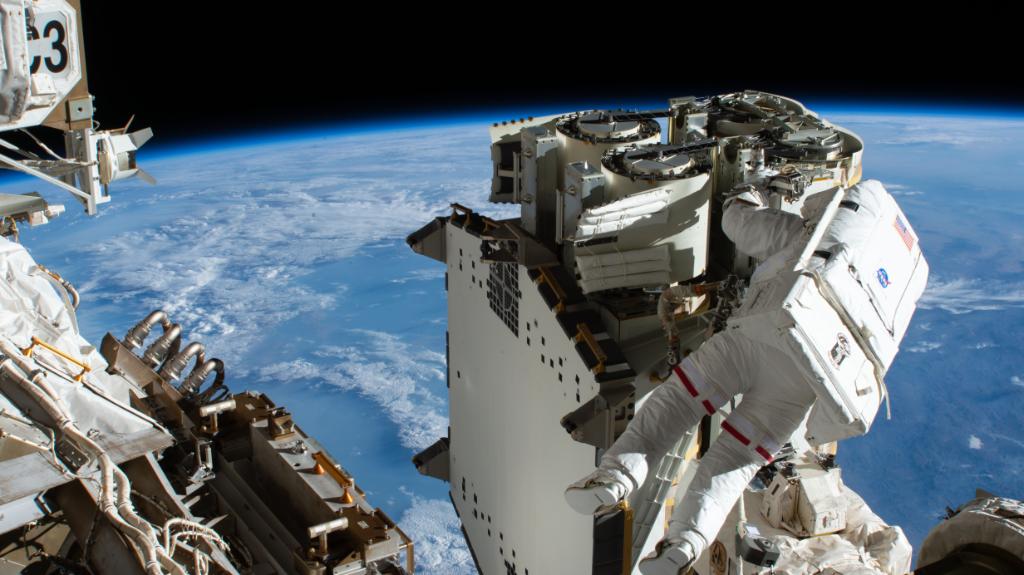Watch Friday's spacewalk to install new solar arrays at space station
The six-and-a-half-hour spacewalk will see Kimbrough and Pesquet working on the far end of the left (port) side of the station’s backbone truss structure (P6).

- Country:
- United States
NASA Expedition 65 crew members Shane Kimbrough and Thomas Pesquet will venture outside the International Space Station (ISS) on Friday for a spacewalk to install and deploy the second of six new solar arrays that arrived in the SpaceX Dragon cargo spacecraft as part of the company's 22nd commercial resupply services mission to the station.
The six-and-a-half-hour spacewalk will see Kimbrough and Pesquet working on the far end of the left (port) side of the station’s backbone truss structure (P6) to upgrade the 4B power channel with the installation and deployment of an ISS Roll-Out Solar Array (iROSA). NASA Flight Engineers Megan McArthur and Mark Vande Hei will assist the duo from inside the station.
NASA TV will begin its live coverage of the spacewalk at 6:30 a.m. EDT on the agency's website as well as the NASA app. The spacewalkers will exit the station's Quest airlock shortly after they set their U.S. spacesuits to battery power at about 8 a.m. EDT on Friday.
Equipped with high-definition cameras, @Astro_Kimbrough & @Thom_Astro will venture outside the @Space_Station to continue installing new, roll-up solar arrays.📅 Don’t miss the action tomorrow, June 25.Watch LIVE at 6:30am ET (10:30 UT): https://t.co/mzKW5uV4hS pic.twitter.com/FgjXvghSKG
— NASA (@NASA) June 25, 2021
The spacewalk will be the ninth for Kimbrough, and the fifth for Pesquet, who arrived for a six-month science mission at the ISS on April 24, 2021, with NASA's SpaceX Crew-2 mission. The two other spacewalks to install and deploy the first pair of solar arrays were conducted on June 16 and June 20.
Having operated beyond their designed 15-year service life, the existing solar arrays have begun to show signs of expected degradation. The new solar arrays will augment the existing arrays, providing more power to the station's orbiting laboratory and ensuring that a sufficient power supply is maintained for NASA's future missions.










